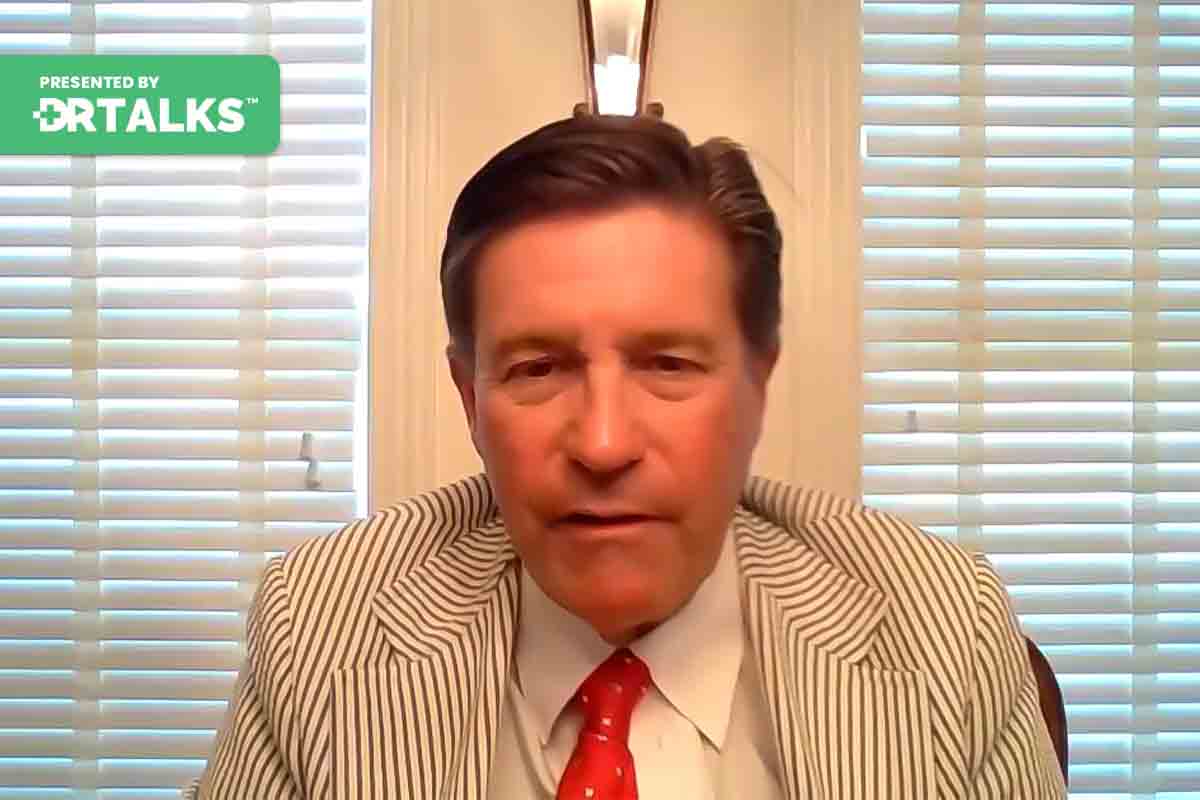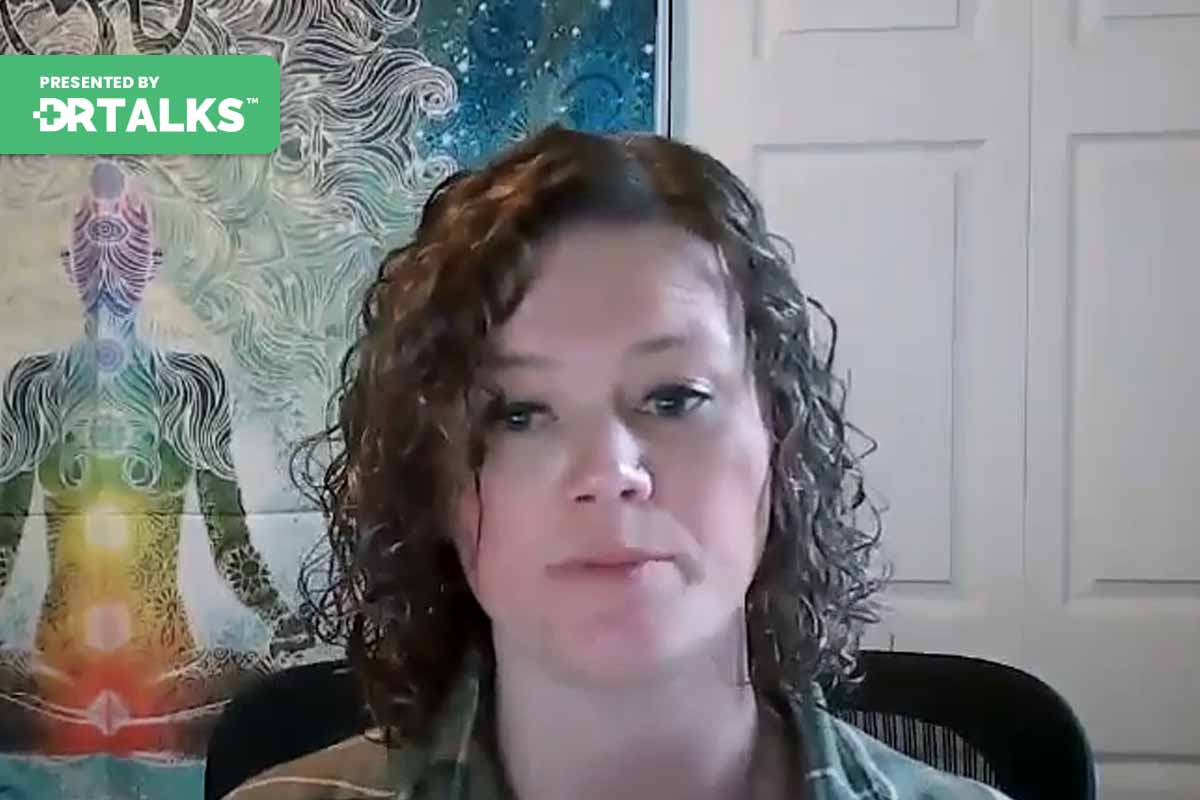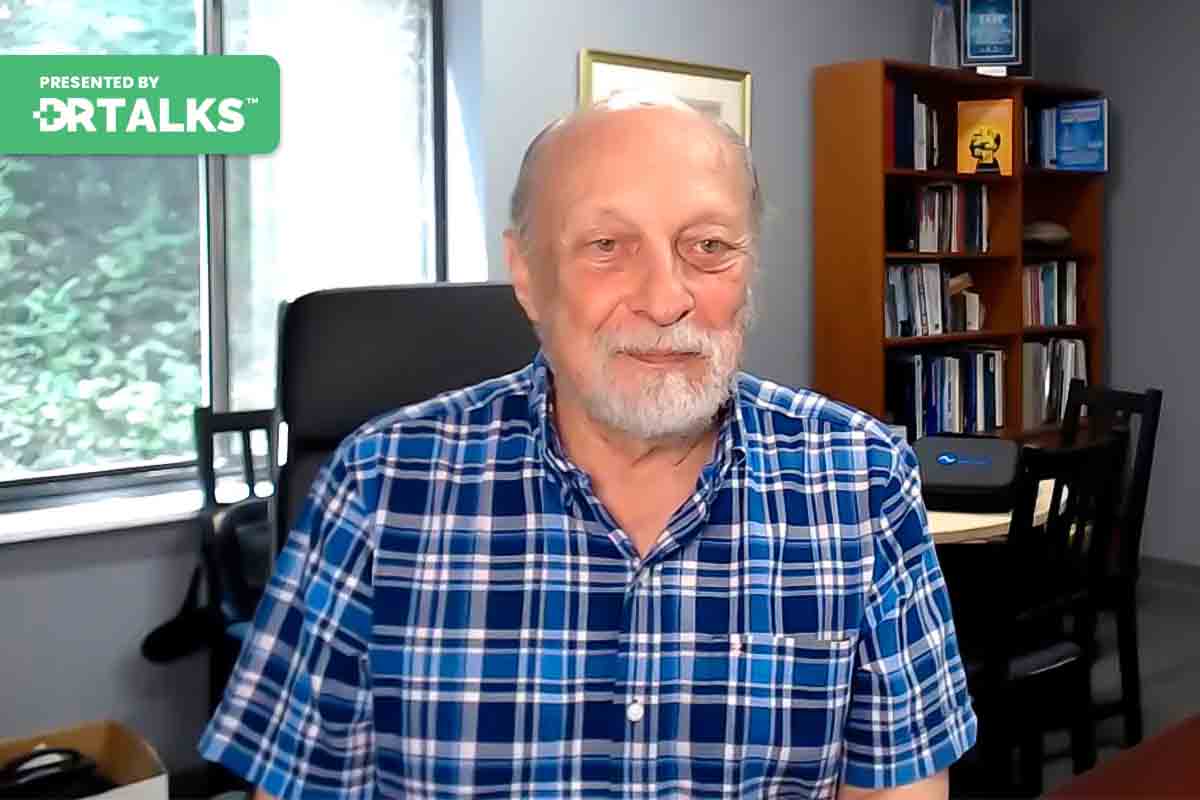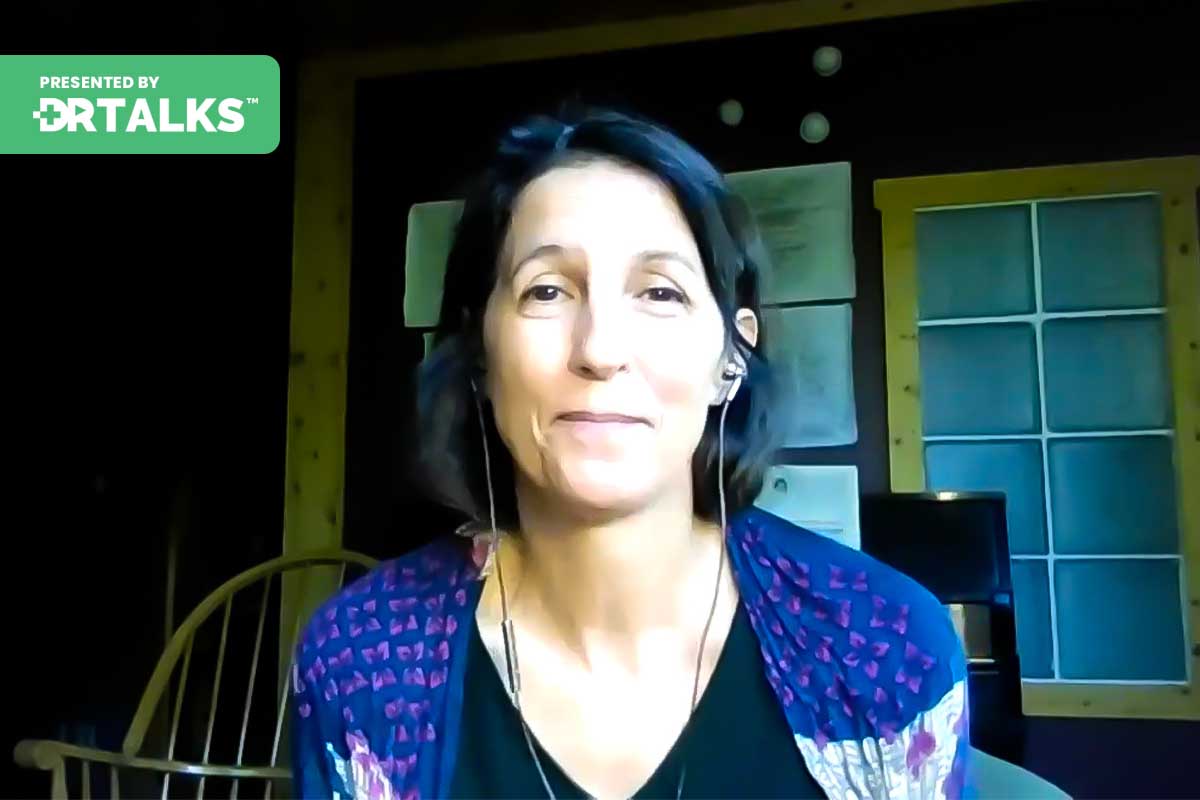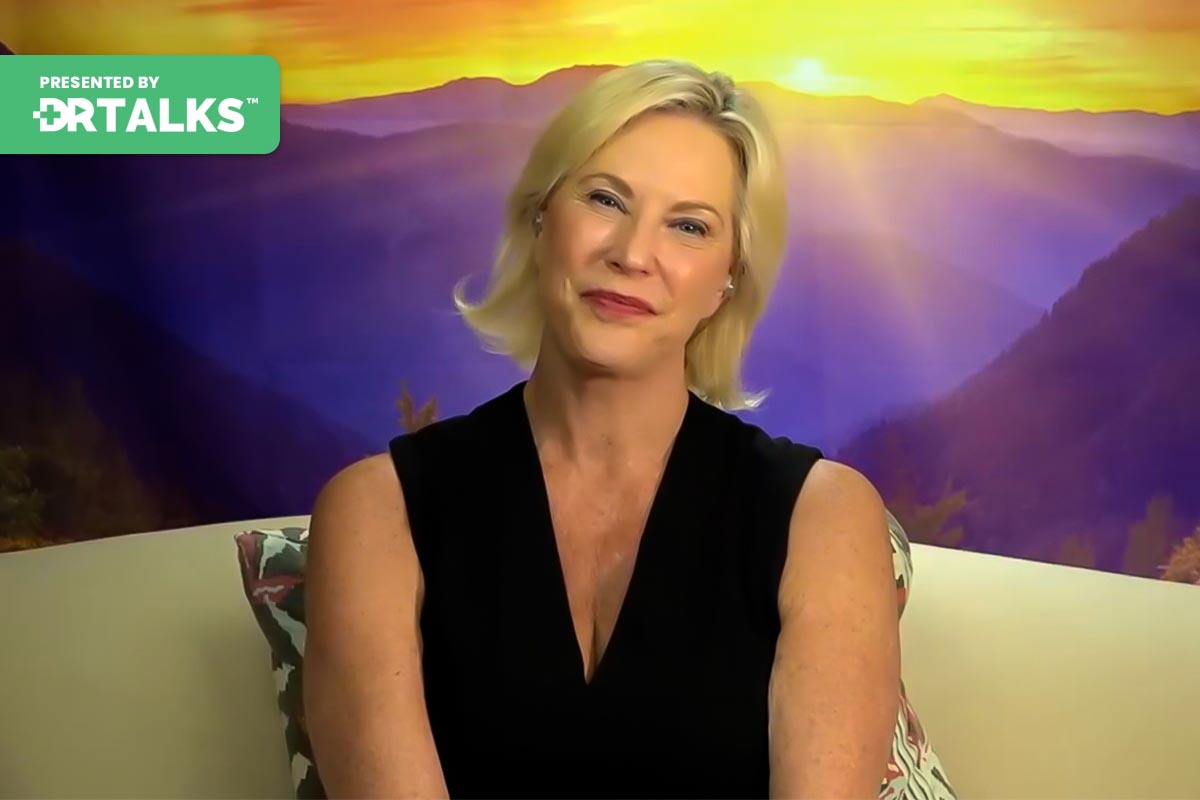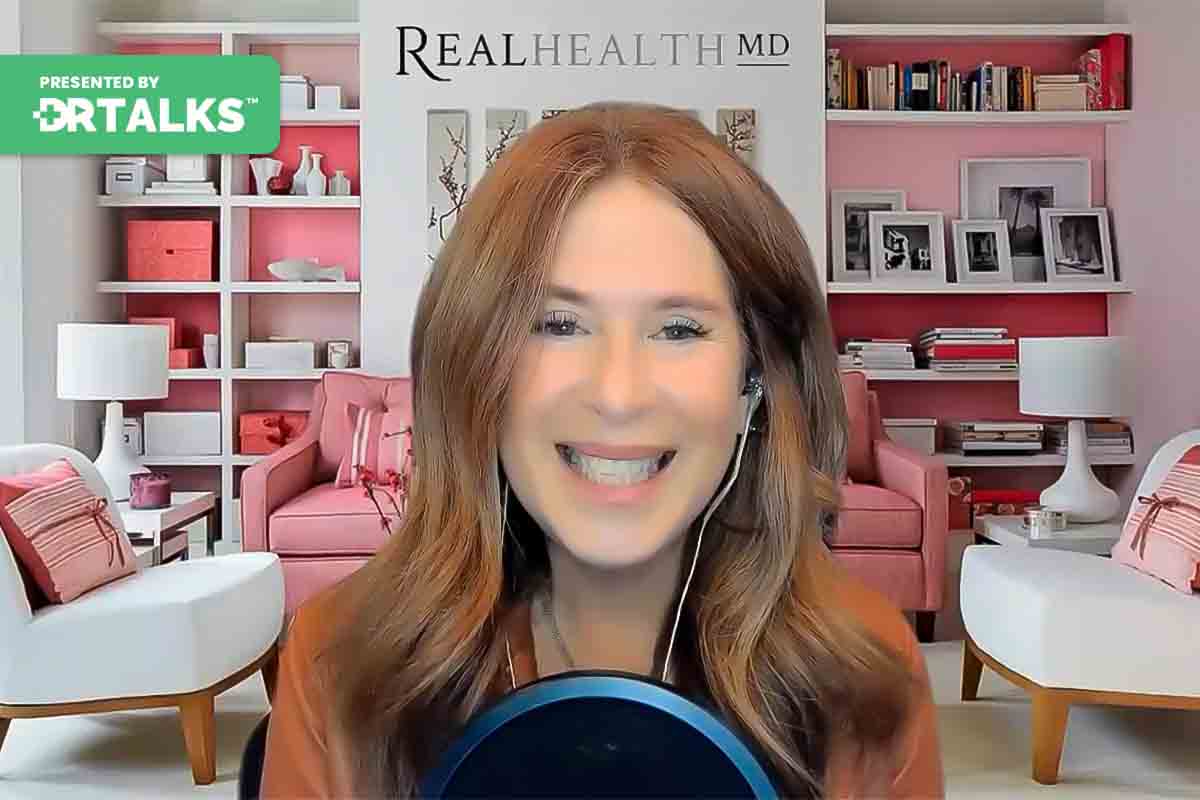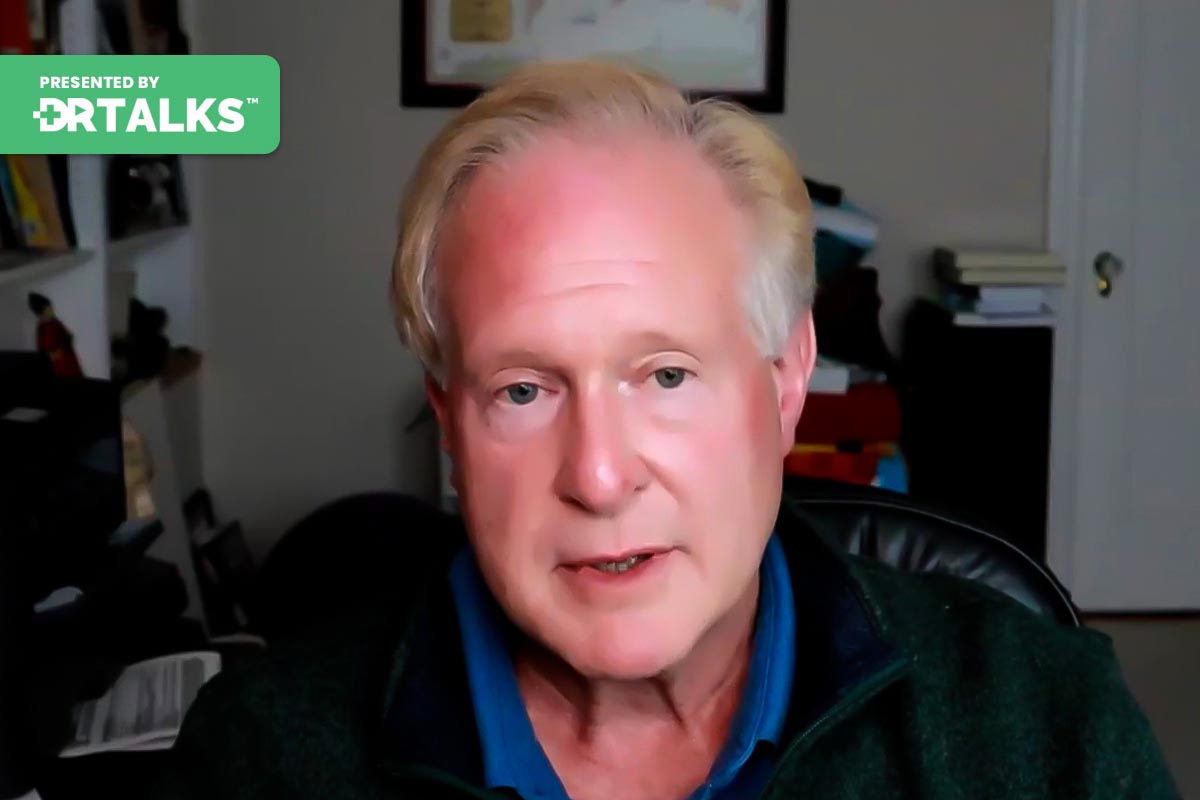Join the discussion below

Felice Gersh, MD is a multi-award winning physician with dual board certifications in OB-GYN and Integrative Medicine. She is the founder and director of the Integrative Medical Group of Irvine, a practice that provides comprehensive health care for women by combining the best evidence-based therapies from conventional, naturopathic, and holistic... Read More
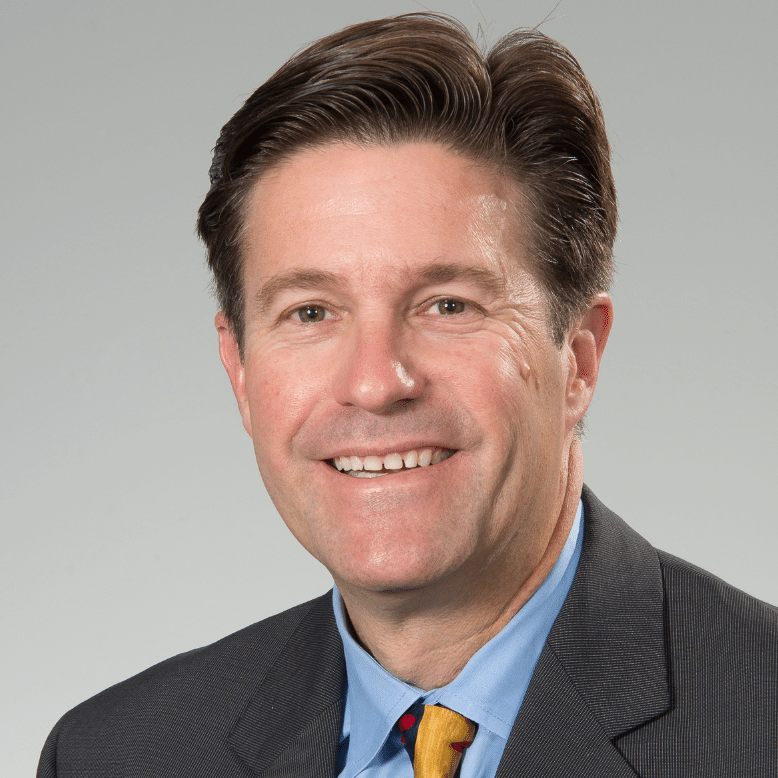
Carl (Chip) Lavie, MD, FACC, FACP, FCCP
Dr. Lavie attended medical school at LSUMC in New Orleans and did his Internal Medicine training at Ochsner and cardiology at the Mayo Clinic. He is currently Professor of Medicine and Medical Director of Cardiac Rehabilitation and Prevention and Director of the Exercise Laboratories at the John Ochsner Heart and... Read More
- Understand the importance of physical activity and exercise in achieving optimal health
- Discover the significance of muscular fitness in insulin regulation
- Learn the differences between exercise and fitness and their impacts on cardiorespiratory health, the prognosis for CVD, and cancers
- This video is part of the PCOS SOS Summit
Related Topics
Atherosclerosis, Autopsies, C-reactive Protein, Cardiorespiratory Fitness, Cardiovascular Disease, Cholesterol, Coronary Arteries, Diabetes, Exercise, Exercise Capacity, Fatty Streaks, Fit, Genetics, Glucose, Hypertension, Inflammation, Medicine, Metabolic Dysfunctions, Mortality, Optimum Health, Physical Activity, Polycystic Ovary Syndrome, Premature Cardiovascular Disease, Preventive Cardiology, Risk Factors, Training, Womens HealthFelice Gersh, MD
Welcome to this episode of the PCOS SOS Summit. I’m your host, Dr. Felice Gersh. With me today is my good friend and an amazing non interventional preventive cardiologist, Dr. Carl Chip Lavie. Dr. Lavie is a phenomenal author, clinician, researcher and teacher. So welcome. I’m so glad to have you on board with me for this summit. And before we start, I do have to do a little bit of bragging myself. I have had the honor to call author several articles that have been published in medical journals with my friend Dr. Chip Lavie. And I’m going to ask you, Chip, to tell the audience the exact number of articles that you have published at this moment, because this is actually like world class. I just want everyone to know that we are now about to hear in this interview a world class physician. So, Chip, tell us how many articles you’ve had published. And then tell us a little bit about yourself and how you became interested in this whole really, I think, incredible world of preventer of cardiologists, not just reactive cardiology.
Carl (Chip) Lavie, MD, FACC, FACP, FCCP
Yeah. Well, thank you very much, Felice, for the kind words. And actually, as of today, I have something like 1600 publications, but 1131 are on PubMed. And so those were the ones that probably really count the most and obviously many more are coming at you. And I have several together, as you mentioned, and several more coming as well. So, yeah, you said, as you mentioned, I actually have a full time clinical practice on all my work days. I have full clinical loads either seeing patients are doing stress tests, running the cardiac rehab program and doing some echocardiography as well. But my real job is in the preventive cardiology and especially things like physical activity, exercise, training, cardiorespiratory fitness.
I got interested in cardiology very early in medical school. I was at LSU Medical School at in New Orleans, and we had two major people that years ago, Dr. Jack Strong and Dr. Jerry Berenson. Jerry Berenson ran the Douglas Heart study. And Jack Strong was a famous pathologist. He did autopsies on the kids and it showed even kids dying at ten years of age, usually from violent deaths like car accidents and accidents that on their autopsies, they already had evidence of atherosclerosis. They had fatty streaks near aorta. And sometimes some of that had 20, 30, 40% lesions in some of the coronary arteries at very young ages. And so we had a project in medical school where we broke out in groups in our first year. And I was the leader of our group, and we decided to do our project on atherosclerosis. And so that got me interested very early in all of the risk factors. And believe it or not, I mean, many of the things that, you know, this was back in 1979 when I was starting medical school. But many of the things that were risk factors in 1979 are really still our major risk factors today and things that, you know, very important to our practices.
So that got me interested probably. What clinched the deal was when I was a second year medical student, my dad had sudden cardiac death. He was a real good tennis player playing in a tennis match. He was a ranked tennis player, was 50 years old. And he’s got a little bit of chest pain out on a tennis court. And his partners convinced him he wasn’t going to go in, but they brought him to the emergency room. And soon after he got to the emergency room, his heart stopped. He was resuscitated. He ended up getting bypass surgery. Later on, he got stents and other bypass surgery, more stents. He actually made it to age 79. And, you know, his his early atherosclerotic cardiovascular disease event with my interest already really clinched the deal with me. And so when I finished medical school, I did internal medicine, then cardiology. And, you know, here I am today, still practice in full time cardiology. But as you mentioned, we do a lot of academic work, a lot of teaching, a lot of, you know, medical journal work, etc.
Felice Gersh, MD
Well, that is like so impactful. And we all know that so many of us have chosen fields in medicine that have some correlation to our own personal experiences. Our family and so on. I went into OBGYN because I was not having any periods. I knew something was wrong, nobody was helping me and ultimately I self-diagnosed myself with the leading version of PCOS and then had to deal with my own fertility challenges. So it is something that every family has someone you know, not every single family has someone with PCOS, although it’s really epidemic levels, but everyone has someone in their family who’s had cardiovascular issues. I know it’s still the number one cause of deaths of women in the United States, and it is of particular relevance to women with polycystic ovary syndrome because it is now recognized that they have, like you were talking about, early age, the onset of these metabolic dysfunctions that can have tremendous effects throughout the cardiovascular system. So in terms of this really important focus that you have on exercise is medicine and fitness, and how can that help? Like, say, a woman is watching this interview and she’s saying, I think my arteries are not good. You know, something’s going on. And then, you know, I have already early onset of, say, pre hypertension. My cholesterol is up and I’m 35. You know, things are happening. So how can exercise be a tool for prevention of cardiovascular events?
Carl (Chip) Lavie, MD, FACC, FACP, FCCP
Well, so for these first of all, back to something you said earlier about that. Every family has a history of heart disease and that is true. And that’s why we actually defined premature cardiovascular disease as men having significant disease under 55 and women under 65 because if you count any ages, you count 80 year olds, every family is going to have it and then it’s going to lose all statistical power.
So really, it’s the premature disease that you really worry about. And what you mentioning is women are much more concerned generally about cancer, particularly breast cancer. And whereas, you know, dying of heart disease is way more likely than the dying of breast cancer, not to not to negate the worry about, you know, breast cancer, which is a significant problem for women. It’s just that still way more women die from cardiovascular disease. And as you mentioned, I think women believe that they’re more protected against cardiovascular disease. And as you mentioned, the women with PCOS, they’re at particular risk maybe two, two and a half times the risk because they get started with the cardiometabolic abnormalities very early in life, you know, so so they’re not waiting to their fifties or sixties to go through menopause and then maybe have the risk factors start.
They’re getting the risk factors for cardiometabolic disease, particularly like getting enough reduced insulin sensitivity that then leads to too high triglycerides, high glucose risk for diabetes. That raises blood pressure. It leads to an inflammatory state that is very important in the pathogenesis of atherosclerosis, so that the women would probably polycystic over disease, particularly those who have obesity and abdominal obesity, which is a lot of visceral adiposity.
But even the women who are there with PCOS have increased cardiovascular disease, maybe not quite as much, but still pretty significantly increased risk. And a long introduction to your question about what does exercise do? Exercise has benefits in all of those categories. So all of the categories, for example, PCOS affects the exercise, improves the lipid profile, particularly lowering the triglycerides and then increasing the cardioprotective HDL. So when the triglycerides go up in PCOS with insulin resistance, then HDL, the good cholesterol goes down. And so exercise improves both of those. Exercise lowers blood pressure directly, but also by leading to a little bit of weight reduction or prevention of weight gain that has significant effects on blood pressure, but even independent of weight, exercise improves the blood pressure. Exercise is a tremendous cause of reducing the prevalence of metabolic syndrome and diabetes because even at any given weight, physical activity and increased cardiorespiratory fitness decreases the glucose and decreases the chance of developing diabetes. And exercise is very anti-inflammatory medicine. So things like C-reactive protein, which is an inflammatory protein that goes up with PCOS and other inflammatory conditions, exercise significantly lowers C-reactive protein levels.
We showed that post to heart attack patients in cardiac rehab program that a 12 week exercise program lowered C-reactive protein levels by like 40%. So tremendous reductions in inflammation. And then probably the most thing that exercise does, it improves cardiorespiratory fitness. That’s kind of a way to describe the exercise capacity. The best way to measure cardiorespiratory fitness is to put a mask on and measure gas exchange, measured oxygen consumption and carbon dioxide production. But the typical way most clinicians measure exercise capacity in their practices is just putting people on the treadmill and seeing how long they go. What’s the speed and incline on the treadmill? You can do that with more simple ways, like a six minute walk test, which a poor man’s way of measuring a poor woman’s way of measuring exercise capacity. You can do it with some shuttle test and other things, but almost every study that measures that assesses cardiorespiratory fitness or exercise capacity shows that this is one of the strongest predictors not only of cardiovascular disease, but all cause mortality is especially a predictor of cancer mortality. We reviewed a paper right now that is actually suggesting that it’s even increasing many other non cardiovascular disease causes of mortality.
So cardiorespiratory fitness is a tremendous risk factor, even for example, in people, women or men who have a risk factor. And let’s just say it’s diabetes. The diabetic man, a woman with diabetes. Diabetes man, a woman who is fit, has a better survival than does that non diabetic who is not fit. And you can same thing you can say for obese smokers that dyslipidemia, you know so hypertensive that fitness usually overrides to a large degree the effects of those other risk factors. So exercise, there is a genetic component of a fit and some people are just naturally fit it. Some people know people go out and do the same exercise every day and when it comes time to run a race, one of them, I beat the other one into race by a lot. That’s because there is a genetic component of being fit. Not everyone can win the marathon in the Olympics no matter how hard they try because they don’t have the genetic capability of doing so. But it’s still the main way when we see people who have high fitness in our practice. The reason they have high fitness is because of physical activity and regular exercise and again, that’s helping all the risk factors in it. PCOS And really for, for almost all morbidities that we have chronic morbidities that we have in our adult practices.
Felice Gersh, MD
You know, talking about some of these other morbidities, something I have noticed and I wonder if this is something that you also have noticed. Well, women with PCOS tend to have a lot of trouble with anxiety and stress and sleep and all of that. And I found that getting more exercise, and especially if they can get a little sunlight along with the exercise, has done tremendous, you know, positive things for their mood, for their sleep, all of these like ancillary things. Have you seen some of these things?
Carl (Chip) Lavie, MD, FACC, FACP, FCCP
Absolutely. That in fact, I think Felice said one of the strongest things that has been neglected in medical practices, certainly this is the case in cardiology. It’s certainly the case in internal medicine, family practice. It’s probably the case in your field, ob gyn, that I think clinicians have neglected the important role that psychosocial stress has on many of the aspects of health and disease in our patients.
But the typical way most clinicians measure exercise capacity in their practices is just putting people on the treadmill and seeing how long they go. What’s the speed and incline on the treadmill? You can do that with more simple ways, like a six minute walk test, which a poor man’s way of measuring a poor woman’s way of measuring exercise capacity. You can do it with some shuttle test and other things, but almost every study that measures that assesses cardiorespiratory fitness or exercise capacity shows that this is one of the strongest predictors not only of cardiovascular disease, but all cause mortality is especially a predictor of cancer mortality. We reviewed a paper right now that is actually suggesting that it’s even increasing many other non cardiovascular disease causes of mortality.
So cardiorespiratory fitness is a tremendous risk factor, even for example, in people, women or men who have a risk factor. And let’s just say it’s diabetes. The diabetic man, a woman with diabetes. Diabetes man, a woman who is fit, has a better survival than does that non diabetic who is not fit. And you can same thing you can say for obese smokers that dyslipidemia, you know so hypertensive that fitness usually overrides to a large degree the effects of those other risk factors. So exercise, there is a genetic component of a fit and some people are just naturally fit it. Some people know people go out and do the same exercise every day and when it comes time to run a race, one of them, I beat the other one into race by a lot. That’s because there is a genetic component of being fit. Not everyone can win the marathon in the Olympics no matter how hard they try because they don’t have the genetic capability of doing so. But it’s still the main way when we see people who have high fitness in our practice. The reason they have high fitness is because of physical activity and regular exercise and again, that’s helping all the risk factors in it. PCOS And really for, for almost all morbidities that we have chronic morbidities that we have in our adult practices.
Felice Gersh, MD
Well, what you have said is exactly the approach to medicine that we in integrative medicine take. It’s right not just narrowing the focus to one thing, but understanding the incredible interplay of all of these different factors that come together to create health or poor health, as is the case in many people these days, and particularly in women with PCOS. And you also touched on the fact that sad to say, but in medical education today, it really isn’t much of a focus on any of the things that you just discussed concerning the importance of relationships, emotions and the relationship to fitness. And another thing that isn’t emphasized, in fact, I don’t think I even had one lecture back in the day when I was in medical school, which is exercise. Like, what does it mean to exercise people like they say this is what the advice is that most people get when they go to the doctor. And I hear this from my PCOS patients every day. I was told to lose weight and exercise. And number one, I don’t know what that means. Number two, I don’t know how to do it and I get tired. So if one of my patients came to you and said, Dr. Lavie, I’ve gotten the same advice from every doctor and I’ve no clue where to start. What is exercise? Is it lifting dumbbells? Is it jogging down the street? I don’t even know what that means.
Carl (Chip) Lavie, MD, FACC, FACP, FCCP
Yes. So first of all, police exercise involves both aerobic exercise and muscle resistance exercise. We probably put most of the attention on the aerobic exercise, but muscular strength is also very important, particularly with aging, maybe less so in young in young people, but particularly as people get over the age of 60, 70, and especially over 80 years of age, muscle strength might be even more important in balancing that cardiorespiratory fitness. But for aerobic exercise, what we suggest for people to do so. So an exercise, prescription involves information on mode of exercise, intensity of exercise, frequency of exercise. And so typically we are recommending people to do aerobic exercise for approximately 30 minutes most days, or of shooting for at least about 150 minutes per week. And aerobic exercise can be walking, riding an elliptical machine, riding an exercise bicycle, jogging, swimming, aerobic dance, cross-country ski, etc. Those would all be examples of the modes that would be considered aerobic exercise.
Now, the frequency of exercise is typically probably most days would be about a better way for people to do so. Sometimes people ask me, what days do I exercise? And I say, I only exercise on the days that I eat, you know, so that would be a good way to tell people that I should be exercising on most days. But at least if you’re adding it up to maybe five times a week, 150 minutes per week. But I think that, you know, people know they’re going to miss some days. So hardly anybody is going to go five straight years and never miss a day of exercise. So I would add what I suggest to people is when you have an opportunity to exercise, go ahead and do it that day.
Even if you did ten straight days, because you’re going to have days down the road that you don’t feel like doing it, you’re schedule gets too busy. You have catastrophes with the family that put a stop to your exercise temporarily, so do it most days. And then, like I said, the duration should be typically about 30 minutes. Most days now say that there are studies that show just five and 10 minutes of exercise gets benefits, and then there’s a major paper lancet in, I think it was in 2013 of 450 Taiwanese that followed them for like seven years and showed that even 10 minutes of exercise of moderate intensity exercise led to a 15% mortality reduction. So you don’t have to beat even the guidelines to get some of the benefits of exercise. And then you say, what should be the intensity of exercise? And so that’s a hard one to say because probably the best way to say it is that people should be doing moderate intensity exercise on a scale of 1 to 10, with ten being the most tired that you can imagine being at zero being like sitting at rest. You know, you should break your fatigue during exercise, like in a 5 to 7 range. Or another way to say that when they are exercising, they should be able to talk. But if they can just chat the whole time, they probably are not going hard enough. If you can’t talk at all, you may be doing too hard. That would be a really simple way to describe what people should be doing with their robotic exercise. Now we can fine-tune that a lot better. If you put somebody on a stress test, you do a cardiopulmonary stress test. We can have an exercise that there are anaerobic digestion. What we can do on a simple stress test, we can pick out the heart rate that they should be exercising at. But I think for most people, you know, they’re not going to have the luxuries of having expensive tests to decide how hard they should be exercising.
So just going out there and doing a moderate intensity, you also, you know, the type of exercise that person should pick to do is one that they’re going to do. You can’t tell somebody, we want you to ride an exercise bike if they hate the exercise by a lot of people, get equipment for the house and you know, it ends up being a cloud hanging, you know, so it’s not even used are used but for hanging their clothes, not even for the exercise. So the best exercise for someone is one that they’re going to actually do. I do think the best exercise for most people would be a fast walk. The exception to that would be people who have very significant musculoskeletal injuries or disease that they can’t walk very fast. So many of those people would do better. Maybe with a bicycle, an elliptical machine, maybe with swimming.
Most people are not capable of swimming enough to do exercise, but maybe even water aerobics would be things that people could do. And that’s the aerobics side of exercise that the muscle side of exercise is that most adults should be doing about two times a week. It might just be for ten or 15 minutes of resistance exercise using the biggest muscle groups, with weights or bands, but doing some type of resistance exercise. We actually published papers before that showed even just one time a week of resistance exercise led to cardiovascular mortality reductions, even independent of the effects of aerobic fitness. And as you get older, muscle strength is even more important because people in their eighties are having issues with falls and so they need to improve their balance. And as the age goes up, muscle strength goes down for many reasons. So, you know, resistance exercise may become more important for a 70 and 80 year old than it is for a 30 year old who has maybe a good amount of muscle strength.
Felice Gersh, MD
So muscle the topic of muscle being important is so underplayed in medicine today. So we know that being strong matters. We don’t want people falling down. We want people to have functional capabilities in their life. But what else does muscle do? Does muscle have something to do with blood, sugar or other kinds of cardiovascular effects?
Carl (Chip) Lavie, MD, FACC, FACP, FCCP
Yeah, absolutely. So muscle muscle plays a very significant role in lowering insulin resistance. And so a combination, for example, in diabetic patients, there have been several studies that show that aerobic exercise improves the blood sugar, but muscle exercise does as well. And you put the two together, you get even an additive effect on improved blood sugar. So blood sugar is one thing, but insulin resistance plays a role in many other factors. It plays a role in the blood pressure. It plays a role in lipids, it plays a role in inflammation. And so improving your insulin sensitivity is very important. And you can do that either without aerobic exercise. You can do that with just, you know, muscle muscular exercise. Obviously, you know, the idea would be for people to do both. And I do think if people are going to do just one or the other, probably there’s probably more benefits overall of aerobic exercise than that muscle exercise. But the ideal is for people to do a little bit of both and really probably a more modest amount of aerobic, you know, being up to 150 minutes per week and doing it most days.
But the resistance exercise could really be just once or twice per week, and you could probably maximize out your benefits, at least. Alisha Your health benefits. You know, if somebody wants to win a muscle building contest, someone’s to win a weightlifting contest, they’re going to have to lift heavy weights, you know, often. But for health reasons, you get the benefits of both aerobic exercise and from muscle exercise at much lower doses of exercise than you need to do to win competitions.
Felice Gersh, MD
And this sounds so incredibly relevant to women with PCOS who almost universally have insulin resistance. And so they’re walking around in bodies and have chronically high blood sugar and chronically high insulin. And we know that 80% have overweight and obesity issues. And, you know, I always say you can’t be multitasking. I know you think you can, but you can’t be making fat and burning fat simultaneously and insulin. It just pushes the ability to make and store fat. So it sounds like there is like universal need for every woman with PCOS to incorporate the exercise principles that you just described. And one of the things that I’ve always talked about is timing. So what about timing of exercise? Does it matter if you exercise in the morning or in the afternoon or what about right before bed? Is it important to time your exercise?
Carl (Chip) Lavie, MD, FACC, FACP, FCCP
So I think, again, the same answer about the mode of exercise applies to timing. The best time to exercise is one that the person is actually going to do. I do think probably the worst time to exercise would be right before planning to go to sleep, because it’s probably going to your heart rate’s going to be too high. Adrenaline might be too high. That might affect you being able to fall asleep. But I think, you know, some people are able to do that. And so if they’re able to fall asleep, then it really doesn’t matter when they exercise. I think what’s important is for an individual to find the time to exercise. I have on a side the leading reason, you know, the patient said say it to the doctor.
The reason they don’t exercise is they don’t have time to exercise. And so the answer to that is you better find time to exercise or you’re going to have to find time to die, you know. So anyway, so you better find some time, whether it’s before work in the morning, whether it’s, you know, in the middle of your work day, whether it’s right when you finish work before dinner. You know, I think most people find it hard to exercise right after eating a big meal. But, you know, some people are able to at least walk out the eating a big meal. And so I think but the timing really depends on what works for the patient’s schedule, what works for what they like the most. And, you know, again, so you have to find something that somebody wants to do. And if you make somebody do you know times or modes that they don’t enjoy, it’s not going to work.
Felice Gersh, MD
Well, I say exactly the same things to my patients. I say any time it’s going to be a good time, because we know that if you pick only one time and then that time comes and goes and you were busy then, well, just find another time. Right? And also that, like you said, there are only 24 hours in the day and we do have to leave time for sleeping and other activities. So you just have to prioritize. You know, you have to decide what matters to you. When you say, I don’t have time, then like you said, well, what’s the alternative of not making time? You know.
Carl (Chip) Lavie, MD, FACC, FACP, FCCP
If you have time to eat, then you have time to exercise. That would be a good answer.
Felice Gersh, MD
I love you know, I always say I create mottos like there are no vacation days from good health habits. Well, now I’m going to say exactly that, that, you know, you just have to put that exercise in that there’s no there’s no exit from exercise. If you’re going to be healthy.
Carl (Chip) Lavie, MD, FACC, FACP, FCCP
So and then the other thing that is certainly an issue today is the sedentary time. So sitting has kind of in a way become the new smoking, you know, so people have prolonged sitting time, some people sitting, but for ten, 12 hours per day. So at least the exercise negates at least most of if somebody who does regular pretty regular exercise, it negates most of the adverse effects that prolonged sitting. It doesn’t totally negate the adverse one one go exercise for 45 minutes in the morning and then they sit for 12 hours the rest of the day. That’s not ideal either. So at but many people are forced to sit at least, you know, long periods of time because they’re working at a day. But at least for many people, the best answer would be try to lessen the sitting. Maybe they can remember people who have to do work stationary, maybe they could do it standing some of the time. At least take breaks every 30 to 45 minutes, even if it’s just one minute to go for a short walk, maybe drink, drink more water to see you have to go use the restroom at least, you know. And so sitting sedentary behavior is another thing that’s also an adverse effect on health.
Felice Gersh, MD
Now, I know a lot of people wear these different wearable devices, you know, and they keep track of how many steps and so on. Do you make a point of saying, you know, try to get in a certain number of steps and is there a value to particularly counting the number of steps?
Carl (Chip) Lavie, MD, FACC, FACP, FCCP
So I think that, you know, obviously if somebody goes out and does a lot of exercise every day, they’re getting it usually enough exercise. But for many a people who will say, I don’t really formally exercise, but I’m very active, that would be a way that they could prove that by measuring their steps. And I think that, you know, typically we’ve said that we should be trying to get 10,000 steps per day, but even the person who’s getting 2000 steps can improve their health by getting 3 to 4000 steps. And you may actually maximize out your benefits by getting even 8 to 8000, 8500 steps. And so I do think that some people can use that to motivate them to move a little bit more and to prove that they really are getting decent amount of steps in their life. And, you know, I’ve had patients, you know, show me that they’re in the office.
And they said, I have an exercise today and it’s 3:00 in the afternoon. And they’ve been at work. They show me that they have 13,000 steps, you know, and so some people really are moving that much at work. I think you and I are probably not getting that many steps when we work. And, you know, if you go from room to room and go into your office and sit in one room with a patient in another room with a patient, when you add it up all during the day, it’s not that many steps. You might have a couple of thousand, but you’re not getting, you know, 8000, much less 10,000. But you might not be getting five or 6000. So most people have to do some purposeful physical activity today to increase their physical activity. But some people really do get a lot of steps in there in their regular life or their maybe their regular work life.
Felice Gersh, MD
Yeah, that is true of my previous office. I was it was on the fifth floor and I always took the steps that my current office is on ground floor. So zero stairs, you know, to get in and out of my office now. So definitely that is an issue for us. You know, health care professionals need to watch their own health for sure. And a lot of the people watching this are young, you know, reproductive age women. But they all have moms, they have grandmoms and so on. And is there an age when like, oh, you missed the boat, it’s too late. You know, your cardiovascular health is set, you can’t do much about it. Is there a point? I mean, we talked about starting very young because young people have often the early starts of this cardiovascular damage. What about is there an age when it’s too late?
Carl (Chip) Lavie, MD, FACC, FACP, FCCP
So there’s no question that if one starts early in life, you could prevent atherosclerosis and at least a progression of atherosclerosis to begin with. And so actually the ideal would be starting things in childhood and adolescence. But there is no age where it’s where it’s useless to start. I mean, there are papers, for example, in cardiac patients that show that 80 year olds who have a myocardial infarction and then go to cardiac rehab and improve their exercise capacity, they have a better survival than those who didn’t didn’t go to cardiac rehab. And so so even benefits have been noted in the eighth, you know, decades of life, you know, so there’s really no point that it’s too late to start, you know, saying that again, it would always be better to start earlier than later, but it’s never too late if you haven’t started yet, you know, in the same same way, if you cholesterol’s bad, you know, be best of it. Have a plus for all your blood pressure you glucose good your whole life but if it’s not good at age 70, you can still benefit by getting it good for the rest of your life because you can still decrease events by some somethings pretty quickly.
Felice Gersh, MD
Well, one of the things that you said that really resonates with me was the value of exercise and fitness for lowering systemic or a body wide inflammation which underlies just about every bad thing, like you’ve mentioned, cancer and mood problems and of course, cardiovascular issues. And now we know it’s involved in everything else, including musculoskeletal degradation. And, you know, degenerative diseases are often inflammatory diseases. And one of the things that is really important, I don’t know if there’s really a lot of data on it is exercise reducing inflammation in the ovary? Because we now know that women with PCOS have actual inflammation surrounding their eggs if they pull out a little follicular fluid that surrounds the egg, it’s full of inflammatory cells and that is really detrimental to fertility and of course, healthy ovarian function well is important for not having early onset of menopause, which is not a good health linked for women to have. So I don’t know if that’s you’ve come across that intuitively. We’ve certainly seen that exercise would improve ovarian health and fertility.
Carl (Chip) Lavie, MD, FACC, FACP, FCCP
I would suspect, again, that’s outside of my area of expertize really. So that when I think of PCOS, I think of it as a simple triad of decrease ovulation puts probably cystic ovaries and have an increase in androgen. But there have been studies in PCOS of exercise that have shown that it is especially more intense exercise, but exercise in general has at least improved ovulation and has helped periods. And so if it does that, then it must be help in the ovary itself, I would think. I mean, I can’t think of another mechanism by which but again, the exact mechanism in polycystic ovary disease is not something that, you know, that I would have been typically fooling with. But at least I know that there are exercise studies that show improvements in ovulation, you know, with so, so in PCOS. So that must mean it’s having some effects on the over, you know, whether it’s inflammation, the ovary or some other effects on the ovary. I think it’s uncertainly, but it would make sense that it would be inflammation.
Felice Gersh, MD
Well, certainly, like we always say, it’s the global everything, you know, whether it’s helping the gut, it’s helping the blood flow, the vascular system and the inflammatory system. I think every one of you out there who’s hearing this news, who is trying to get more regular cycles, who’s trying to get pregnant, needs to incorporate exercise and fitness into your health care regimen. And like we’ve talked about, it’s just not being included in the standard care and it absolutely has to be. It’s so forgotten or it’s just like glossed over. Just go exercise and people have no clue what that means. And everyone out there now knows that they should be exercising that fitness is, as we know, we’ve come to call it, a vital sign of health. It should be up there with what’s your blood pressure, what’s your pulse, what’s your fitness status, and so on. So in terms of everyone out there trying to now move forward, now they know the critical importance of exercise and fitness. Muscle matters, you know, another good motto and that they need to actually get on this however they can fit it into their lives. It’s not optional for health. So what would you suggest would be the first step? If they want to start today, not even tomorrow, they want to start today. So can you just give a few helpful tips for just beginning?
Carl (Chip) Lavie, MD, FACC, FACP, FCCP
Yes, a one. You have to pick a mode of exercise that you might like and that you physically can do. Meaning if you really have too much problems with your hip or your knees and you can be able to walk with the most people, the walk is the easiest to do and if you’ve been sedentary for a long time, it’s always best to start slow. And maybe it might be best to just start walking five, ten or 15 minutes, you know, not starting with 30 and 45 minutes start slow. And if you can only do 5 minutes, then you might have to do 5 minutes, two or three times a day, you know, to gradually build up your fitness. But you should be going to where you able to increase your exercise over weeks and months to where you do in 30 minutes straight.
You don’t have to do 30 minutes straight because we now know that 2-15 minute bouts of exercise are probably just as good as a 1-30 minute bout of exercise. But I think it is easier for more people to do the exercise all in one bout. So you have to start doing that in the same way with at the same time, once a week or twice a week, do it a few minutes of doing some resistance exercise. It could be just using weights. And again, you want to be able to do 15 repetitions, and you don’t want to be straining on the 15th repetition. You want to be able to do it. Now, if it feels like a feather, then you need to add more weight. But that would be a good way to start and to get building up to where you’re doing 30 minutes most days or at least 150 minutes per week of that mode of exercise or combinations; you don’t have to just walk.
You can walk one day, ride an exercise bike the next day, use an elliptical machine the other day, cut your grass the other day. I mean, all the modes of exercise all add up and are complementary to each other. And then pick once or twice a week to do five, ten, 15 minutes of resistance exercise. Start slow, start with lower weights. You can build your muscle and then add weights later. But don’t try to overdo it at first because what you don’t want to do is not enjoy it. You don’t want to be hurting yourself, and you don’t want to discourage yourself to the point where you’re not able to continue doing it.
Felice Gersh, MD
Well, I love that you put the word enjoy. I know that you love running and I’ve seen you run all over the world. You know, like you’ll say, here I am running by the Colosseum. Right? And all of these things. And when you get used to it, when it becomes part of your life, it can be enjoyable, right? I mean, exercise doesn’t have to be work or like people think of it as pain, it can actually bring joy, right?
Carl (Chip) Lavie, MD, FACC, FACP, FCCP
Yeah, I think so. I actually very much look forward to the exercise because I feel like that stress relieves it, gives me a time, you know, to worry about that run. And I’m thinking about my lectures, I’m thinking about papers. I’m creating paragraphs in my head. And I have to admit, I think I’ve heard people, many people say the same thing, that they really end up enjoying it. It ends up, even you know, there’s even some evidence that it releases endorphins. It gives you a feeling of well-being. Not everyone feels that way. Some people do feel like they, you know, a lot of people have said, even though they do exercise, if they could take an exercise pill, they would switch it over any day.
I don’t think that’s the majority of people. I think people do it and stick with it a while, really end up enjoying it, and it becomes part of their day just like everyone brushes their teeth. You should brush your teeth, and you should exercise. So I think, again, for most people, it’s a stress release. Very few people, if you ask somebody if they have stress in their life, almost everyone says yes now. I mean, if you do questionnaires, some people have a lot more stress than others. But I think almost everyone feels like they have stress. And we might look at someone and say that person doesn’t have stress or another person has tremendous stress. And sometimes it’s not what we think about them, it’s what they feel. And so I think most people feel like they have a lot of stress. And again, exercise is one of the best ways to reduce stress.
Felice Gersh, MD
Well, I’ll give you a little tip of what I do. Anyone out there I love to put on dance music and like, nobody’s watching. I’m not professional dancer, but you just let it all out, right? You just put on that music. Think of like, even African beat music, and you just go to the beat and it’s so stress reducing and you’re moving and you feel good, right? Everybody loves to dance. Everybody loves music. Find what you like. Maybe get a buddy, right? Sometimes people can take walks with friends or just do it. Like you said, you know, out in nature, you could think about things. Just watch when you cross the street, look, look for potholes and find something that resonates and just stick with it because life is worth it. Right? I mean.
Carl (Chip) Lavie, MD, FACC, FACP, FCCP
I think a lot of people a lot of your viewers, I bet, would love to see a video of you doing those exercises.
Felice Gersh, MD
Well, maybe I’ll put it on TikTok. My first one. I’ve never been on Tik Tok. I don’t know. Maybe not. We’ll see. I’ll send it to you for a preview first, but I can’t thank you enough. I mean, this is a topic that deserves to see the light of day. The importance of musculoskeletal fitness exercise, of course, for women with PCOS, but for everyone in your life, for everyone you love. Because cardiovascular health is not optional to survival, to having a good quality of life, like you said, because we all know of people who are cardiac cripples, that is not a good quality of life. So this matters and you can enjoy it, make it part of your life and Chip, you have over a thousand articles on PubMed. If people want to read about some of your incredible research and the articles you published, can they just go to PubMed and like look up some of your articles?
Carl (Chip) Lavie, MD, FACC, FACP, FCCP
Yeah. So first of all, on PubMed, if somebody just Googles PubMed and you go to PubMed and you put the VLA, the IEC, they can get the list of. Right. As of today, it would be 1001 of the 31 papers on pop that if you do the most recent you’d see the most recent in order. Now if you click on each title, most of the articles will at least have an abstract. Many of the articles you need to subscribe to certain things. And so not everyone would be able to see the whole article, but most of the articles will at least have PubMed, the abstract, which would be a one paragraph summary which honestly would be all most people would want to read anyway. And actually that would be all sometimes what the doctors want to read as well. But. But that would be a good way to do that. And also, you know, they certainly could Google my name, call chip lobby or call the be a chip lobby and they’ll see a lot of stuff on Google come out as well.
Felice Gersh, MD
I know because you’ve lectured around the world and some of that ended up on YouTube and such. Right.
Carl (Chip) Lavie, MD, FACC, FACP, FCCP
So that part of YouTube.
Felice Gersh, MD
Yes. I mean, so everyone go to your computer and Google Dr. Chip Lavie and go to PubMed. You will learn so much. I know I have in fact, the first before I ever met you, I was reading the articles you published. Right. And I came up and said, you’re writing an article and you’ve written this and you know, I want to talk to you. So absolutely everyone who cares about understanding their body and what’s going on from one of the world’s experts in preventive cardiology and exercise and fitness, go and find all the stuff he has out there on the Internet. And thank you so much again for joining me. This was incredibly informational, educational and enjoyable, so I’m going to go take a walk now. I hope that we will write many more articles together and thanks again.
Carl (Chip) Lavie, MD, FACC, FACP, FCCP
Thanks to these.
Downloads

